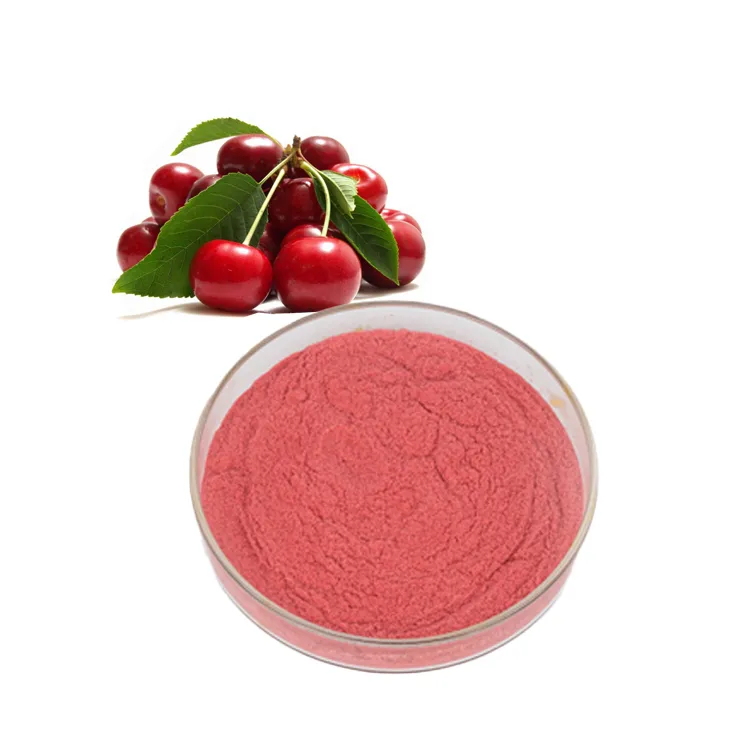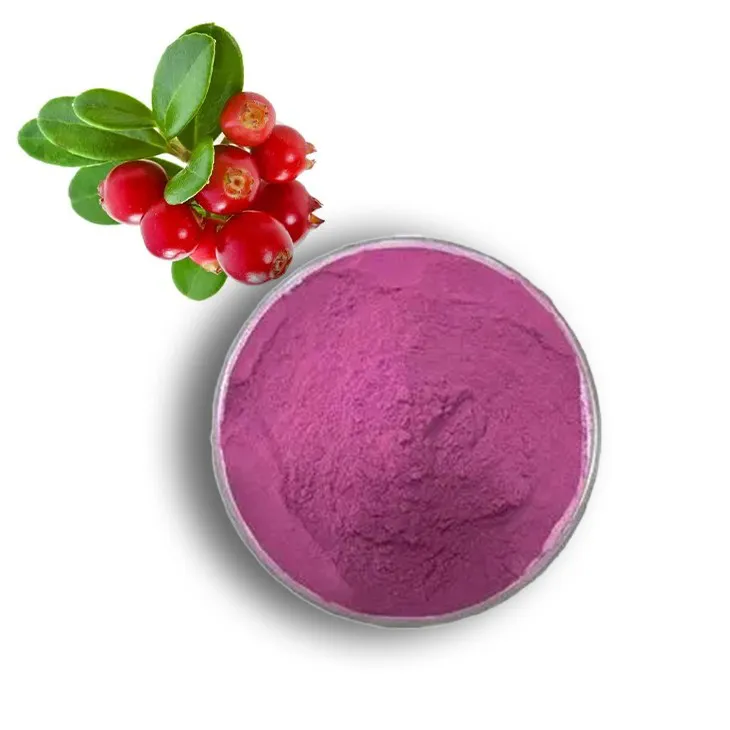- 0086-571-85302990
- sales@greenskybio.com
Decoding the Chemical Composition: Insights into Thaumatin's Properties
2024-07-17
1. Introduction
Thaumatin is a fascinating protein with a wide range of unique properties. It has drawn significant attention in various fields, including the food industry, biotechnology, and medicine. Understanding its chemical composition is crucial for unlocking the secrets behind these properties.
2. The Basics of Thaumatin's Chemical Structure
Thaumatin is a relatively large protein, consisting of a specific sequence of amino acids. These amino acids are linked together by peptide bonds, forming a polypeptide chain. The primary structure of thaumatin is the linear sequence of these amino acids, which serves as the foundation for its higher - level structures.
2.1 Amino Acid Composition
Thaumatin is rich in certain amino acids. For example, it contains a significant amount of aspartic acid and glutamic acid, which are acidic amino acids. These acidic amino acids play important roles in the protein's properties. They can contribute to the protein's solubility, as their side chains can interact with water molecules. Additionally, they may also be involved in electrostatic interactions within the protein structure or with other molecules.
Another important group of amino acids in thaumatin are the hydrophobic amino acids such as leucine, isoleucine, and valine. These hydrophobic amino acids tend to cluster together in the protein's interior, away from the aqueous environment. This hydrophobic core helps to stabilize the overall structure of the protein.
3. Secondary and Tertiary Structures and Their Significance
The polypeptide chain of thaumatin folds into specific secondary structures, such as alpha - helices and beta - sheets. These secondary structures are formed through hydrogen bonding between the peptide - bonded backbone atoms of the amino acids.
3.1 Alpha - Helices
Alpha - helices in thaumatin contribute to the protein's overall shape and stability. The helical structure provides a rigid framework, and the side chains of the amino acids in the helix can interact with other parts of the protein or with external molecules. For example, they can be involved in binding to taste receptors, which is related to thaumatin's taste - modifying abilities.
3.2 Beta - Sheets
Beta - sheets in thaumatin also play important roles. They can form flat, sheet - like structures that can interact with other beta - sheets or other parts of the protein. These interactions can affect the protein's stability and its ability to interact with other substances. In some cases, beta - sheets can be exposed on the surface of the protein, allowing for interactions with molecules in the environment, such as in food products or in the human body.
The tertiary structure of thaumatin is the overall three - dimensional arrangement of its secondary structures. It is formed through a variety of interactions, including disulfide bonds, hydrophobic interactions, and electrostatic interactions. The disulfide bonds, which are covalent bonds between cysteine residues, are particularly important for stabilizing the protein's structure. They prevent the protein from unfolding under certain conditions, such as changes in temperature or pH.
4. Thaumatin's Taste - Modifying Abilities and Chemical Composition
One of the most remarkable properties of thaumatin is its ability to modify taste, especially its intense sweetening effect. This property is closely related to its chemical composition.
4.1 Interaction with Taste Receptors
Thaumatin interacts with taste receptors on the tongue in a specific way. The surface of the protein, which is determined by its chemical structure, contains regions that can bind to the sweet - taste receptors. These binding regions are likely formed by specific amino acid side chains and their arrangements. For example, certain charged or polar amino acids may be involved in the binding process. When thaumatin binds to the sweet - taste receptors, it triggers a signal transduction pathway that is perceived as a sweet taste in the brain, despite the fact that thaumatin has a very different chemical structure compared to traditional sweeteners like sucrose.
4.2 Role of Structure in Taste Modulation
The three - dimensional structure of thaumatin is crucial for its taste - modifying abilities. Any changes in its secondary or tertiary structure can potentially affect its ability to bind to taste receptors. For instance, if the disulfide bonds are broken due to denaturation, the protein may lose its characteristic sweet - taste - modifying ability. This emphasizes the importance of maintaining the integrity of the protein's chemical composition for its proper function as a taste - modifier.
5. Solubility and Chemical Composition
Thaumatin's solubility is another important property that is influenced by its chemical composition.
5.1 Role of Amino Acids in Solubility
As mentioned earlier, the presence of hydrophilic amino acids, such as aspartic acid and glutamic acid, contributes to thaumatin's solubility. Their side chains can form hydrogen bonds with water molecules, allowing the protein to be dispersed in aqueous solutions. However, the hydrophobic amino acids also play a role. Although they tend to be sequestered in the interior of the protein, their proper arrangement within the protein structure affects the overall solubility. If the hydrophobic core is not properly formed, it can lead to aggregation of the protein, reducing its solubility.
5.2 Influence of pH on Solubility
The solubility of thaumatin can also be affected by pH. At certain pH values, the ionization states of the amino acid side chains can change. For example, at low pH, the acidic amino acids may be protonated, which can alter their interactions with water and other molecules. This can lead to changes in the protein's solubility. In general, thaumatin has relatively good solubility in a range of pH values, but extreme pH conditions can cause denaturation and a decrease in solubility.
6. Stability and Chemical Composition
Thaumatin's stability is important for its applications in various fields. Its chemical composition plays a major role in determining its stability.
6.1 Thermal Stability
The tertiary structure of thaumatin, with its disulfide bonds and hydrophobic interactions, provides a certain degree of thermal stability. The disulfide bonds act as "anchors" that hold the protein structure together, preventing it from unfolding at moderately high temperatures. However, at very high temperatures, these bonds can be broken, and the hydrophobic interactions can be disrupted, leading to protein denaturation. The amino acid composition also affects thermal stability. For example, the presence of certain amino acids with high heat - resistance properties can contribute to the overall thermal stability of the protein.
6.2 Stability in Different Environments
In addition to thermal stability, thaumatin also needs to be stable in different chemical environments. For example, in food products, it may be exposed to various additives, preservatives, and other components. The protein's chemical structure allows it to interact with some of these substances in a stable manner. However, some chemicals can cause denaturation or degradation of thaumatin. For instance, strong oxidizing agents can break the disulfide bonds, while proteolytic enzymes can cleave the peptide bonds, leading to a loss of the protein's function.
7. Thaumatin in the Human Body: Chemical Composition and Interaction
When thaumatin is consumed, its chemical composition determines how it interacts with the human body.
7.1 Digestion and Absorption
Thaumatin is a protein, and like other proteins, it is subject to digestion in the gastrointestinal tract. Enzymes in the stomach and small intestine break down the protein into smaller peptides and amino acids. The specific amino acid composition of thaumatin affects how easily it can be digested. For example, the presence of certain resistant peptide bonds may slow down the digestion process. Once digested, the amino acids are absorbed into the bloodstream and can be used for various metabolic processes in the body.
7.2 Interaction with Biological Systems
Thaumatin may also interact with other biological systems in the body. For example, it may interact with the immune system. Although thaumatin is generally considered safe for consumption, in some cases, it may trigger an immune response in sensitive individuals. This could be related to its chemical structure, such as the presence of certain antigenic epitopes on the protein surface. Additionally, thaumatin may interact with cells in the oral cavity and the digestive tract, which can affect its taste - modifying properties and its overall fate in the body.
8. Conclusion
In conclusion, the chemical composition of thaumatin is a complex and multi - faceted aspect that underlies its many remarkable properties. From its taste - modifying abilities to its solubility, stability, and interactions in the human body, every aspect of thaumatin's behavior can be traced back to its amino acid sequence, secondary and tertiary structures, and the various bonds and interactions within the protein. Understanding these relationships is not only important for basic scientific knowledge but also has significant implications for the applications of thaumatin in the food, biotechnology, and medical fields. Future research may further explore the details of these relationships and potentially lead to the development of new products or applications based on thaumatin's unique properties.
FAQ:
What are the main elements in thaumatin's chemical composition?
Thaumatin is a protein, so it is mainly composed of amino acids. These amino acids contain elements such as carbon, hydrogen, oxygen, nitrogen, and sometimes sulfur. The specific arrangement and types of these amino acids are crucial in determining the properties of thaumatin.
How do the bonds in thaumatin contribute to its taste - modifying abilities?
The bonds within thaumatin, especially the peptide bonds between amino acids and other intramolecular bonds, play a significant role in its taste - modifying abilities. These bonds help in maintaining the three - dimensional structure of the protein. The unique conformation allows thaumatin to interact with taste receptors on the tongue in a specific way, which results in its ability to modify taste, such as enhancing sweetness.
What makes thaumatin soluble?
The hydrophilic amino acid residues on the surface of thaumatin contribute to its solubility. These residues have an affinity for water molecules, allowing thaumatin to dissolve in aqueous solutions. The overall charge distribution and the presence of polar groups in the chemical composition also play a role in its solubility characteristics.
How does the chemical composition of thaumatin ensure its stability?
The chemical composition of thaumatin provides stability through several mechanisms. The proper folding of the protein, held together by various bonds, protects it from denaturation. Also, the presence of certain amino acid sequences may contribute to its resistance against enzymatic degradation. Additionally, the hydrophobic and hydrophilic interactions within the molecule help maintain its stable structure in different environments.
How does thaumatin interact with the human body based on its chemical composition?
As a protein, when thaumatin enters the human body, it is recognized and processed like other dietary proteins. Its chemical composition determines how it is digested, absorbed, or excreted. It may interact with taste receptors in the mouth first, which is related to its taste - modifying property. Then, during digestion, enzymes break down the peptide bonds in thaumatin, and the resulting amino acids are absorbed for various physiological functions.
Related literature
- Thaumatin: A Review of its Structure and Function"
- "Chemical Composition and Functional Properties of Thaumatin in Food Systems"
- "The Role of Thaumatin's Chemical Makeup in Biological Interactions"
- ▶ Hesperidin
- ▶ Citrus Bioflavonoids
- ▶ Plant Extract
- ▶ lycopene
- ▶ Diosmin
- ▶ Grape seed extract
- ▶ Sea buckthorn Juice Powder
- ▶ Fruit Juice Powder
- ▶ Hops Extract
- ▶ Artichoke Extract
- ▶ Mushroom extract
- ▶ Astaxanthin
- ▶ Green Tea Extract
- ▶ Curcumin
- ▶ Horse Chestnut Extract
- ▶ Other Product
- ▶ Boswellia Serrata Extract
- ▶ Resveratrol
- ▶ Marigold Extract
- ▶ Grape Leaf Extract
- ▶ New Product
- ▶ Aminolevulinic acid
- ▶ Cranberry Extract
- ▶ Red Yeast Rice
- ▶ Red Wine Extract
-
Acerola Extract
2024-07-17
-
Kupilu Extract
2024-07-17
-
Purple Sweet Potato Extract
2024-07-17
-
White Willow Bark Extract
2024-07-17
-
Europen Bilberry Extract
2024-07-17
-
Calendula Extract
2024-07-17
-
Aminolevulinic acid
2024-07-17
-
Bayberry Extract
2024-07-17
-
Diosmin
2024-07-17
-
Giant Knotweed Extract
2024-07-17





















